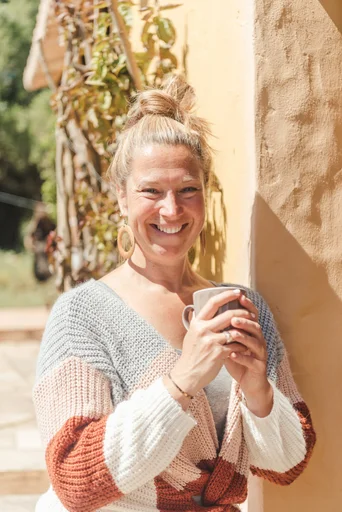Q&A: Can You Recommend Some Yoga Poses for Beginners?

Why Try Yoga? A Beginner's Guide
Yoga: What Is It?
Yoga is an ancient and complex practice, rooted in Indian philosophy. Its origins can be traced back to northern India over 5,000 years ago. The first mention of the word “yoga” appears in Rig Veda, a collection of ancient texts. This suggests its deep connection to the Vedic and Upanishadic heritage, as well as its influence on Buddhist and Jain traditions. Furthermore, Indian monks spread their knowledge of yoga in the West during the late 1890s, leading to its widespread popularity in Western countries by the 1970s.
Why Beginners Should Consider Yoga
For beginners, yoga offers a multitude of health benefits that make it an appealing practice to explore. Scientific research has shown promising potential for yoga to improve quality of life in people with chronic pain. Additionally, various studies have indicated that yoga may help manage pain, improve symptoms of headaches and osteoarthritis, reduce risk factors for heart disease, and show significant improvements in balance, mobility, cognitive function, and overall quality of life.
Moreover, practicing Hatha yoga has been found to have a promising effect on anxiety. It is particularly beneficial for individuals who experience high levels of anxiety at the start of their practice. These findings suggest that yoga can be a valuable tool for enhancing both physical and mental well-being.
Recommended Yoga Poses for Beginners

Now, let's explore some recommended yoga poses that are perfect for beginners. These poses are gentle, yet effective, and can help you ease into your yoga practice with confidence.
Mountain Pose (Tadasana)
Mountain Pose, or Tadasana, is a foundational yoga pose that focuses on alignment and grounding. To achieve this pose, stand tall with your feet together, distribute your weight evenly, and engage your thigh muscles. As you inhale, extend your arms overhead with your palms facing each other. Hold the pose for a few breaths while maintaining a steady and relaxed posture.
The Mountain Pose is beneficial for improving posture and strengthening the legs and core muscles. It also promotes a sense of calmness and stability, making it an ideal starting point for beginners.
Downward-Facing Dog (Adho Mukha Svanasana)
Downward-Facing Dog, or Adho Mukha Svanasana, is a rejuvenating pose that stretches the entire body. Begin on your hands and knees, then lift your hips upward to form an inverted V-shape. Keep your hands shoulder-width apart and press firmly into the ground while relaxing your head and neck.
This pose helps relieve tension in the back, shoulders, and hamstrings while energizing the body. It also improves circulation and enhances overall flexibility, making it an essential addition to any beginner's yoga routine.
Warrior Pose (Virabhadrasana)
Warrior Pose, or Virabhadrasana, encompasses several variations that focus on strength, balance, and concentration. The most common variation involves stepping one foot forward into a lunge position while extending the opposite leg straight behind you. Raise your arms overhead with palms facing each other to complete the pose.
This powerful pose builds lower body strength and stability while cultivating mental resilience. It also encourages mindfulness and determination, making it an empowering choice for beginners seeking to enhance their physical and mental well-being through yoga practice.
Child's Pose (Balasana)
Another essential yoga pose for beginners is the Child's Pose, also known as Balasana. This gentle resting posture is a go-to for practitioners of all levels, providing plenty of benefits and serving as a vital component of routine practice. To achieve this pose, kneel on the floor, sit back on your heels, and then fold forward, extending your arms in front of you or alongside your body. As you relax into the pose, focus on deepening your breath and releasing any tension in your back and shoulders.
Child's Pose is essential because it's the position you assume whenever you need a break during a yoga class. It offers a sense of calmness and relaxation while gently stretching the hips, thighs, and ankles. This soothing pose also helps to alleviate stress and fatigue, making it an ideal addition to any beginner's yoga routine.
Comparative Data:
Child's Pose: More accessible posture
Child's Pose: Provides plenty of benefits
Child's Pose: Essential for beginners and veterans alike
Tips for Starting Your Yoga Journey
Finding the Right Space
Creating a comfortable yoga space at home is essential for a fulfilling practice. Choose a quiet area with enough room to move freely and place a yoga mat on the floor. Consider adding elements that promote relaxation, such as soft lighting, calming colors, and soothing music. Keep the space clutter-free to minimize distractions and create a serene atmosphere that encourages mindfulness and focus.
Listening to Your Body
Understanding your limits and being patient with yourself is crucial as you embark on your yoga journey. Pay attention to how your body feels during each pose, and honor any discomfort by adjusting or resting as needed. Embrace the process of gradual improvement and avoid pushing yourself beyond your current capabilities. By listening to your body's signals, you can cultivate a safe and sustainable practice that nurtures both physical and mental well-being.
Consistency Is Key
Maintaining a regular yoga practice is fundamental for reaping the full benefits of this ancient discipline. Set aside dedicated time each day or week for your practice, even if it's just a few minutes. Consistency allows you to build strength, flexibility, and inner peace over time. By committing to regular sessions, you'll gradually experience positive transformations in both your body and mind.
Incorporating these tips into your yoga journey will help you establish a supportive environment, develop self-awareness, and foster long-term commitment to this enriching practice.
Key Takeaways:
Create a serene yoga space at home with minimal distractions.
Listen to your body's signals and adjust poses accordingly.
Dedicate consistent time for yoga practice to experience lasting benefits.
This section provides practical guidance for beginners embarking on their yoga journey by emphasizing the importance of creating an inviting space, respecting personal limitations, and embracing regularity in practice.
Q&A: Your Yoga Questions Answered
How Often Should Beginners Practice Yoga?
As a beginner, it's important to approach yoga with a balanced and sustainable routine. Yoga can be practiced 5-7 times a week, but for beginners, starting with 3-4 sessions per week is recommended. This frequency allows your body to adapt gradually and reduces the risk of overexertion. As you become more comfortable with the practice, you can gradually increase the frequency to experience more profound benefits.
Incorporating yoga into your daily routine doesn't always require lengthy sessions. Even 15-30 minutes of yoga each day can yield noticeable improvements in flexibility, strength, and mental clarity. Consistency is key, so finding a manageable schedule that aligns with your lifestyle is essential for long-term success.
Can Yoga Help with Stress?
Yoga has been widely recognized for its positive impact on mental well-being, particularly in reducing stress and promoting relaxation. The practice of yoga encourages mindfulness and deep breathing, which are effective tools for managing stress levels. By focusing on the present moment and connecting with your breath, yoga helps alleviate anxiety and promotes a sense of calmness.
Moreover, regular yoga practice has been shown to lower cortisol levels, the hormone associated with stress. This reduction in cortisol not only contributes to a more relaxed state of mind but also supports overall physical health.
What Equipment Do I Need?
For beginners embarking on their yoga journey, minimal equipment is required to get started. The essentials include a yoga mat, which provides cushioning and stability during poses, and comfortable clothing that allows free movement.
Additionally, props such as blocks, straps, and bolsters can enhance your practice by providing support and assisting in achieving proper alignment. These props are especially beneficial for beginners as they help modify poses according to individual needs while maintaining safety and comfort.
In summary, beginners should focus on acquiring a quality yoga mat along with any props that facilitate ease and stability during their practice.
We bring back the importance of initiation into womanhood by Roos-Veerle Krijnen & Ella-June Henrard
Welcome to the Women’s Initiation Retreat by Naked Truth Retreats, a transformative journey into the depths of your True Feminine Nature. This retreat, scheduled from 17th to 24th August 2024 in Portugal, invites you to remember the sacredness and wholeness of your being.
Roos-Veerle Krijnen & Ella-June Henrard



